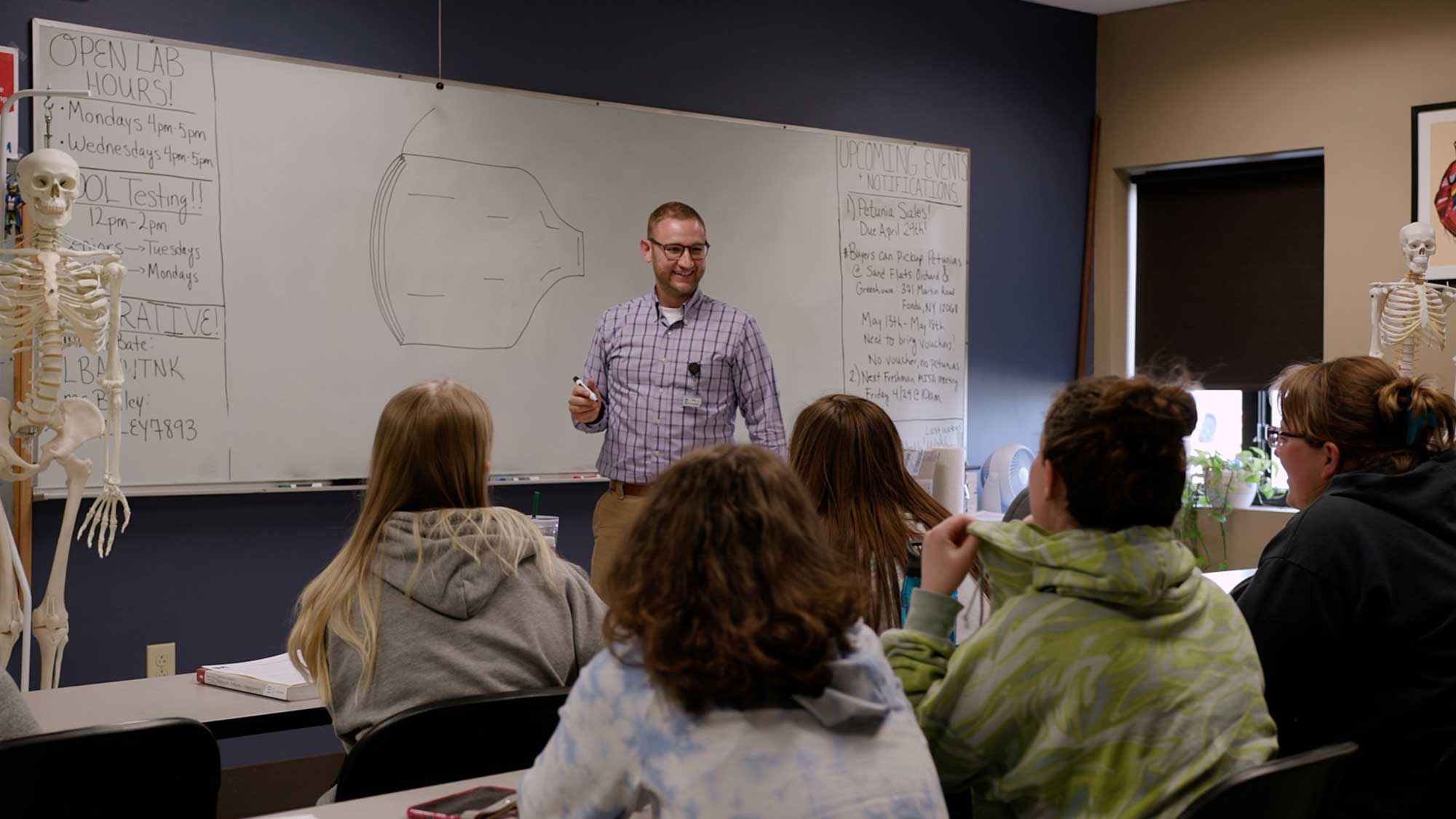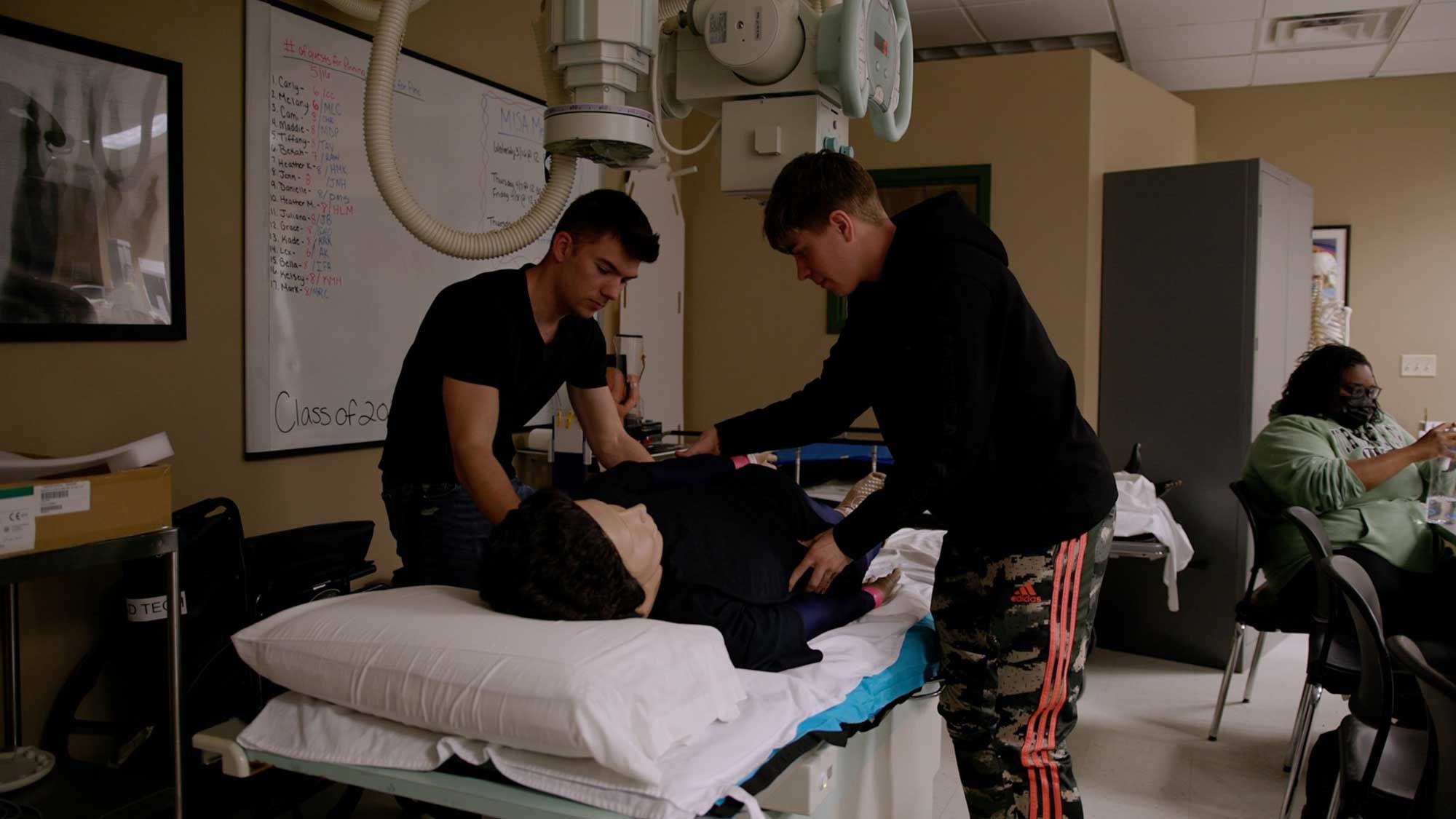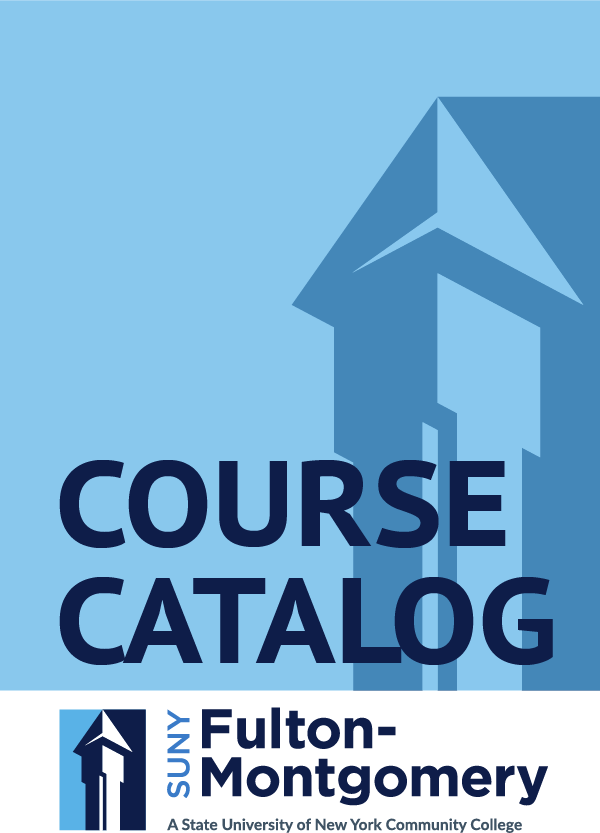Why study Radiologic Technology AAS at FMCC
This award-winning competitive admissions program prepares students to utilize their knowledge of human anatomy, radiographic procedures and radiation safety to provide quality diagnostic radiographic images, for the purpose of diagnosis and treatment of injury and disease. Graduates are prepared to take the American Registry of Radiologic Technologists examination for certification and New York State licensure making them eligible to work in a hospital, clinic, or private imaging center as Radiologic Technologists. Graduates may also transfer to pursue a bachelor’s degree.
Request info for this program
Career Pathways
Our region boasts a wide variety of career opportunities in the radiology field. The positions presented are potential career pathways FMCC graduates can take and are just a sample of the many career possibilities.
The labor market and employer information are specifically presented for the Amsterdam, Gloversville, Capital District, and the Mohawk Valley regions. Salary information is based on estimates within the Capital District.
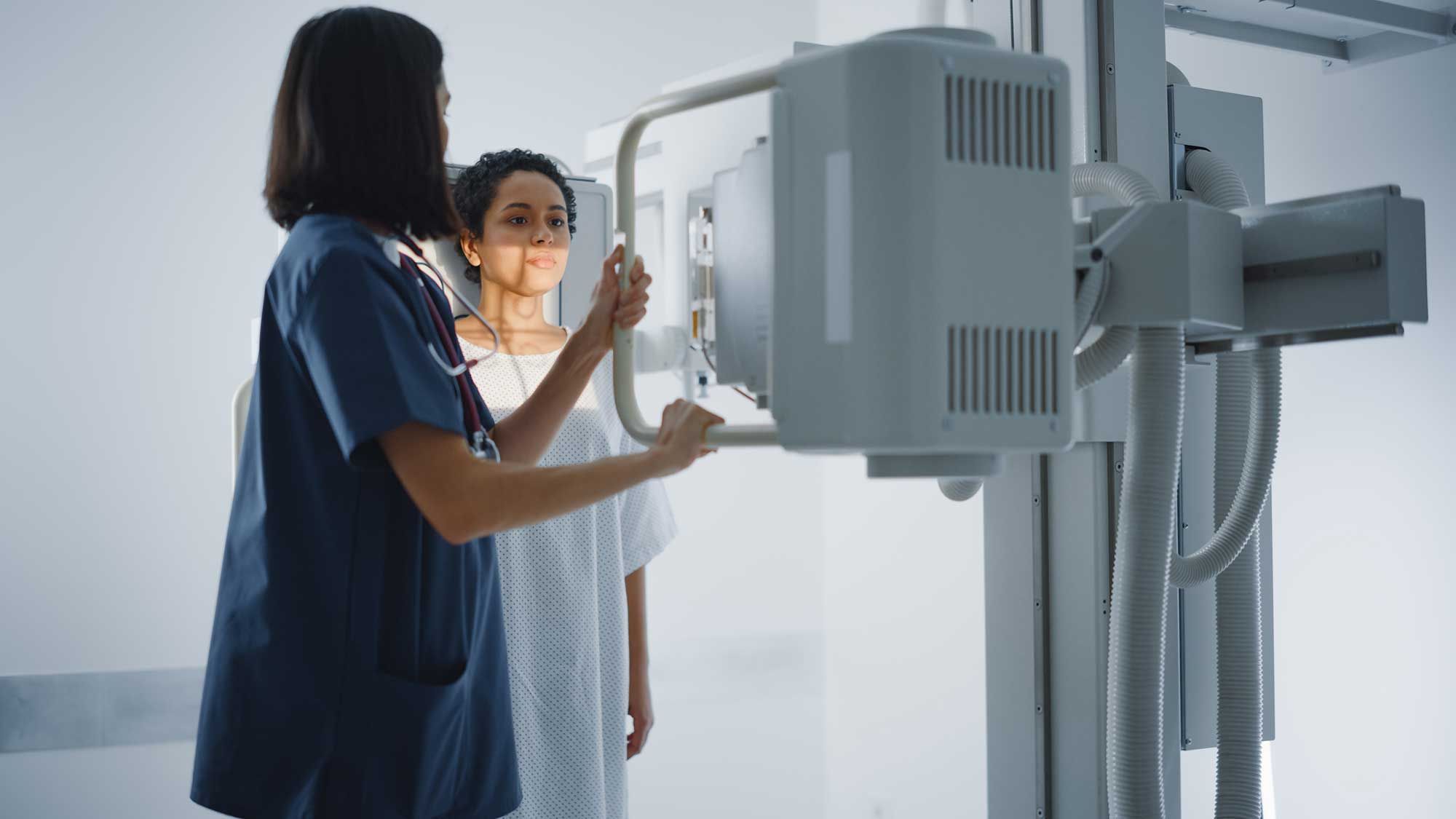
MEDIAN SALARY
$63,131*
SALARY RANGE $47,231 - $86,006
Take x-rays and CAT scans or administer nonradioactive materials into patient’s bloodstream for diagnostic or research purposes. Includes radiologic technologists and technicians who specialize in other scanning modalities. (bls.gov)
Nearly 900 expected jobs in the region in the next 10 years.

MEDIAN SALARY
$81,058*
SALARY RANGE $60,879-$102,727
Operate MRI scanners and monitor patient safety and comfort. View images of area being scanned to ensure quality of pictures. May administer gadolinium contrast dosage intravenously, interview patient, explain MRI procedures, and position patient on examining table. (bls.gov)
Over 150 expected jobs in the region in the next 10 years.

MEDIAN SALARY
$125,571*
SALARY RANGE $69,806 - $369,713
Diagnose and treat diseases and injuries using medical imaging techniques, such as x rays, magnetic resonance imaging (MRI), nuclear medicine, and ultrasounds. May perform minimally invasive medical procedures and tests. (bls.gov)
Over 100 expected jobs in the region in the next 10 years.
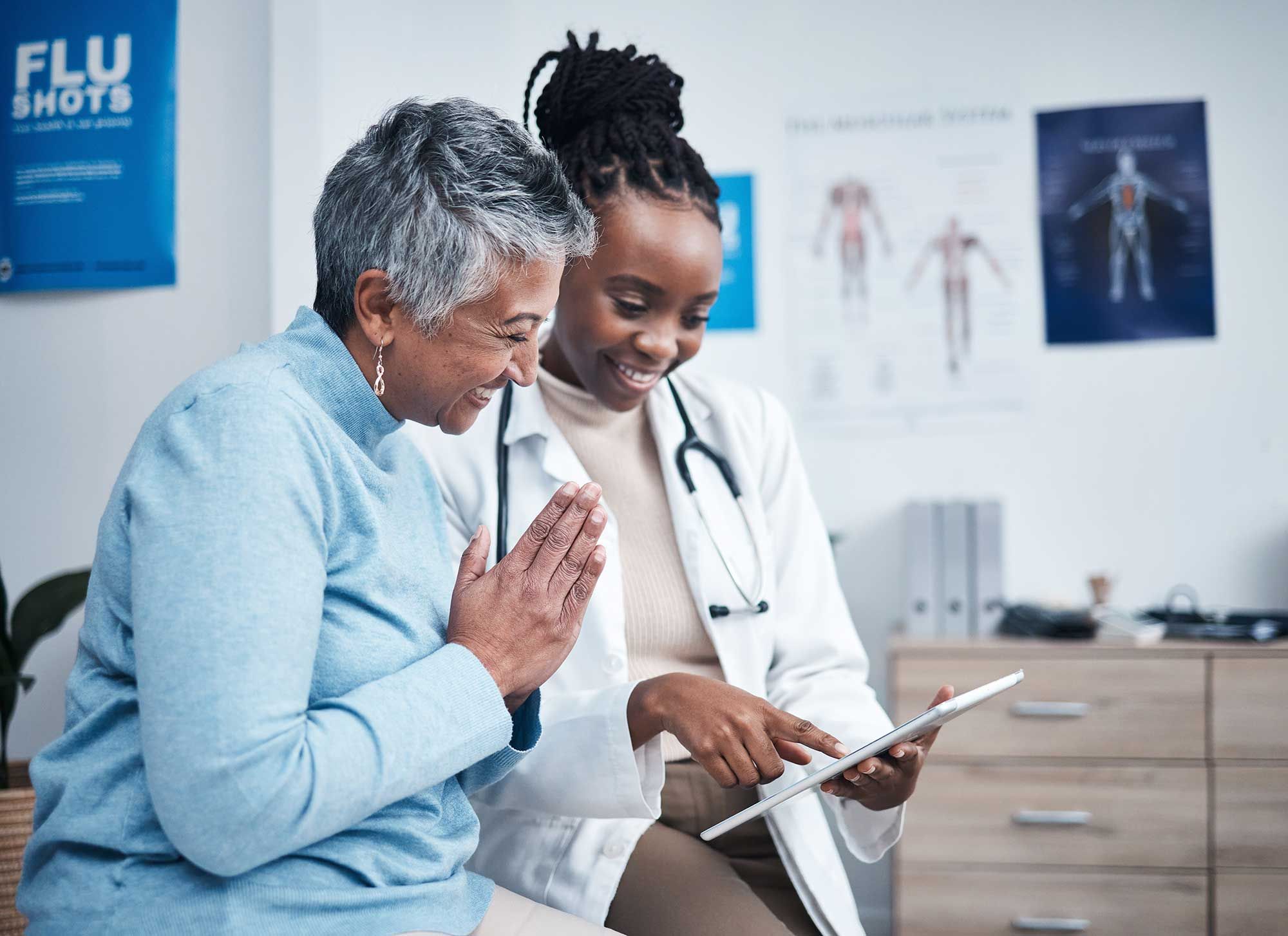
MEDIAN SALARY
$121,481*
SALARY RANGE $95,959 - $153,881
Provide healthcare services typically performed by a physician, under the supervision of a physician. Conduct physicals, provide treatment, counsel patients, and may in some cases, prescribe medication. Must graduate from an accredited educational program for physician assistants. (bls.gov)
Nearly 1,100 expected jobs in the region in the next 10 years.
Salary information presented are estimates and can be different for each individual based on education, experience, and the specific employer.
Labor market data is based on 2021 estimates derived from Lightcast (Career Coach | Lightcast)
Some of Our Regional Employers
Our commitment to your career path goes beyond the classroom with continued expansion of hands-on internships, job shadowing, and job placement opportunities with over 50 regional business and organization exclusive partners, a career network of over 200 regional companies and organizations; plus Annual Job Fairs every Spring semester.
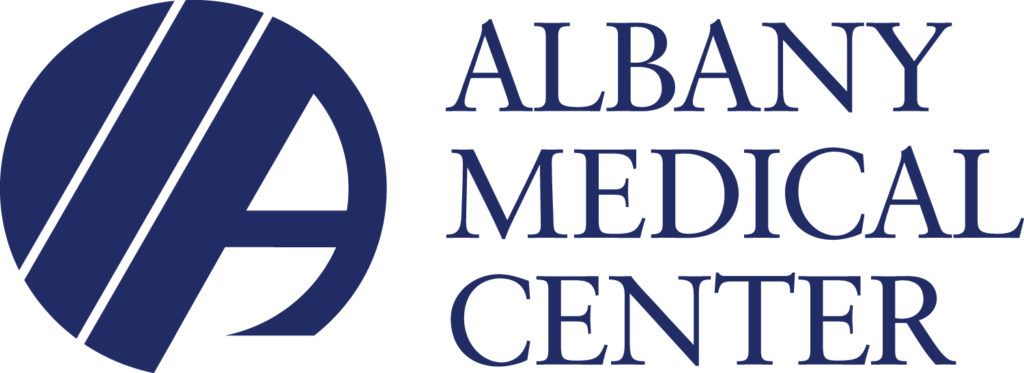
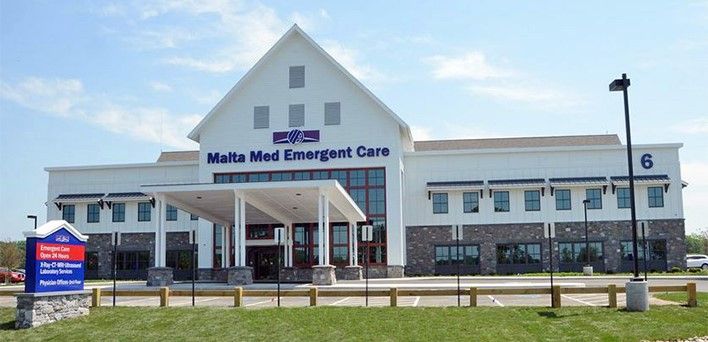


Transfer Opportunities
Being part of the largest system of public higher education in the United States, the State University of New York, SUNY FMCC has established a multitude of transfer pathways for our students at both SUNY and Private schools. Below are some of our major transfer colleges and universities.
75 Credits
2 EXPERIENCED FACULTY
100%
Program Insight
Graduates of the Radiologic Technology AAS Program have gone on to rewarding careers at local hospitals, clinics, imaging medical offices. The program’s mission is to provide an excellent education, partner with local healthcare facilities, graduate professionals who will continue their education, fulfill employment needs within their communities, and promote high quality patient care education.
Learning Outcomes
Students will be able to:
-
Develop clinical competency in the performance of basic radiologic procedures.
-
Demonstrate problem-solving and critical thinking skills.
-
Cultivate and promote good communication skills, with patients, staff, and others.
-
Graduate students from a learning environment that encourages high ethical standards and professional development.
Program Notebook Documents
Program Features
Hands-on Clinical Experience
Students will receive direct radiologic experience through clinical hours at local hospitals, clinics, nursing homes, or imaging medical offices.
State-the-Art Digital Radiography Lab
Where all core classes are held allowing students to develop essential critical-thinking skills through simulation and experimentation.
Joint Review Committee on Education in Radiologic Technology (JRCERT)
The (radiography/radiation therapy/magnetic resonance/medical dosimetry) program is accredited by the
Joint Review Committee on Education in Radiologic Technology
20 North Wacker Drive, Suite 2850
Chicago, IL 60606-3182
312-704-5300
Email:
The program's current accreditation award is 8 years. The current accreditation award letter can be found here.
Medical Imaging Student Association (MISA)
Each semester the club participates in service to the college, service to the community, and a fundraiser. Members also have the option to join the Lambda Nu National Radiology Honor Society Chapter Chi Phi.
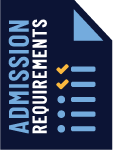
Special Admission Requirements
Admission to the Radiologic Technology AAS program is competitive and requires completion of specific prerequisites for acceptance. Upon an initial review of your high school transcript as well as transcripts from ALL colleges previously attended, you will be directed to either complete the Radiologic Technology Application or be accepted to the Health Studies/ Pre-Radiologic Technology Path to complete any remaining requirements.
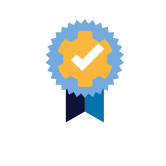
Internship Opportunities
Students will receive direct radiologic experience through completion of clinical hours at local hospitals, clinics, nursing homes, or imaging medical offices. Approximately 18-20 students will be accepted to the Radiologic Technology program each fall, based on clinical site availability.

Dual Admissions Opportunities
Take advantage of the dual admissions opportunities and be accepted into bachelorette programs in medical imaging or health care management at either SUNY Upstate Medical University or Excelsior University while attending the Radiology Technology AAS program at SUNY FMCC.
Course Highlights
Course Catalog
SUNY FMCC offers its catalog online in a downloadable PDF document that makes information on programs, courses and policies most current and accessible, while reducing impact on the environment. Additional information is available on the College’s website and portal. To read and search the FMCC Catalog, you’ll need Adobe Reader version 7.0 or later.
2025-2026 FMCC CATALOGProgram Course Layout
This rigorous program provides a balance of radiographic coursework with hands-on clinical experiences to prepare you for a career as a radiologic technologist. Here are some of the courses you will take.
This course provides the students with a basic understanding of the science of Radiology and Imaging Modalities. Students will explore culturally competent care as it relates to health. Students will learn medical terminology, the role of medical language as well as the professional organizations and standards affiliated with Radiologic Technology. Investigation of critical thinking and problem-solving strategies, as they relate to clinical education, will be a focus.
This course provides the students with a review on basic mathematical principles that will be applied to radiographic physics formulas. Students will gain knowledge on atomic structure and theory. Students will learn about the electromagnetic spectrum and the nature of radiation. Students will learn about the properties of x-rays, and the laws of electrostatics and electromagnetism. The basics of radiation protection will be covered in this course.
This course offers students a clinical overview of medical imaging as it pertains to patient care. The major topics include: patient education and communication, infection control, patient assessment, medical emergencies, and patient preparation for imaging examinations. This course will introduce students to various patient equipment, pharmacology, and contrast media. Professional ethics and implication for the radiographer will be examined. This course includes a one-week clinical assignment at an affiliate hospital.
In this hands-on clinical experience course, students will translate what they have learned in the didactic and lab environments and apply the knowledge gained into the clinical setting. Students will observe, assist and perform radiographic examinations in local area hospitals and affiliated satellite locations under the supervision of Radiologic Technologists, and designated Clinical Preceptors. Students will focus on radiographic examinations that have been covered in RAD 110 Radiographic Procedures I.






